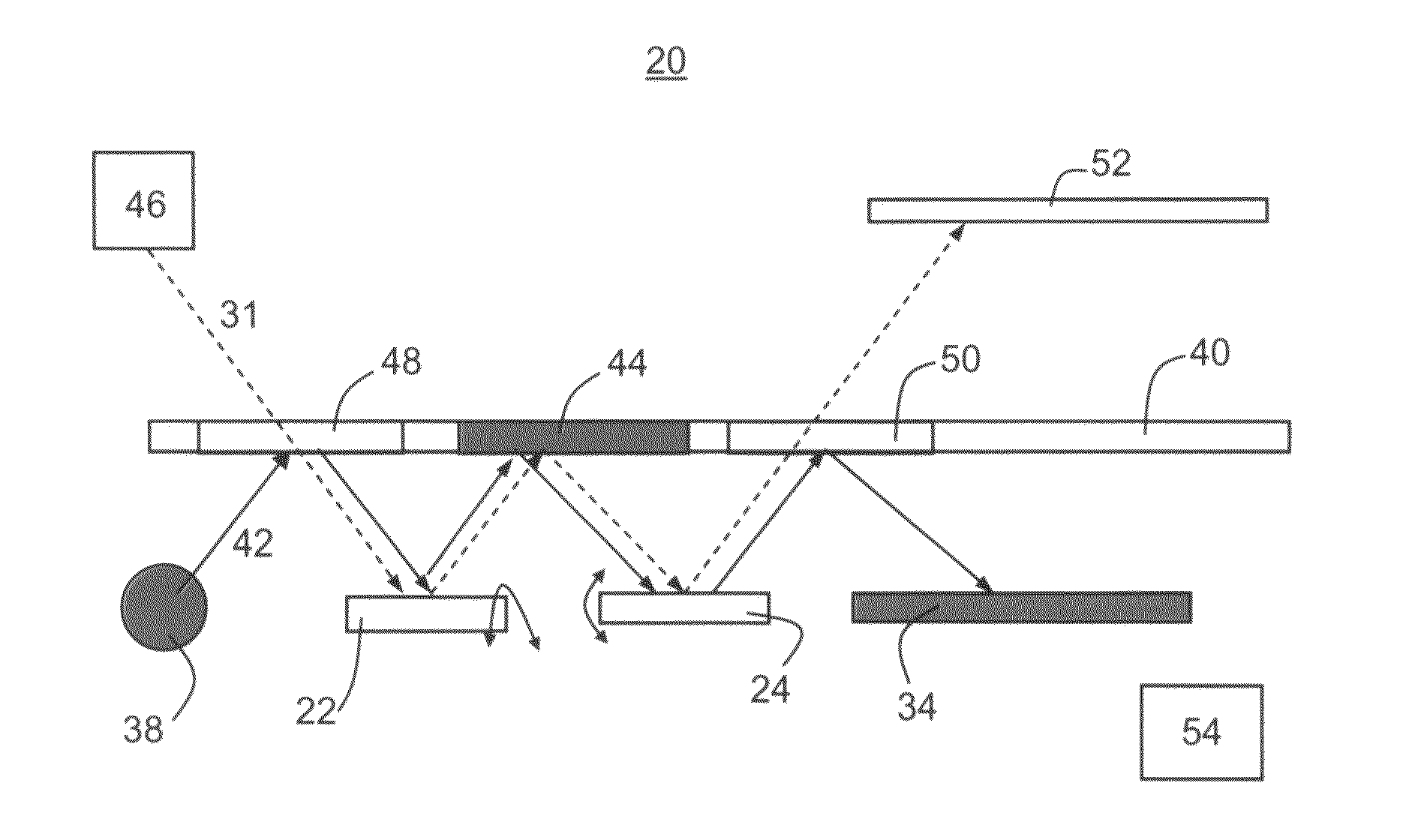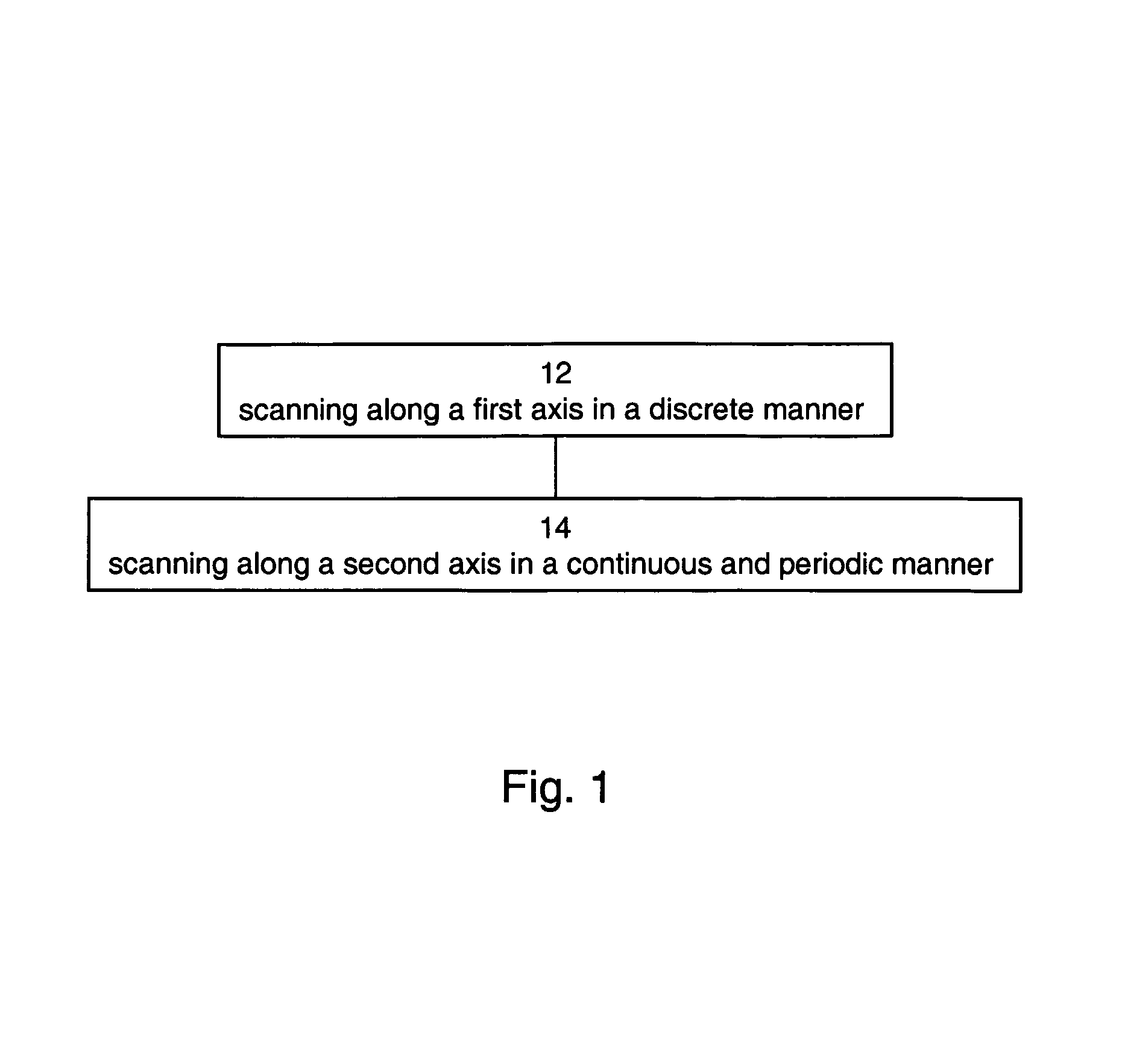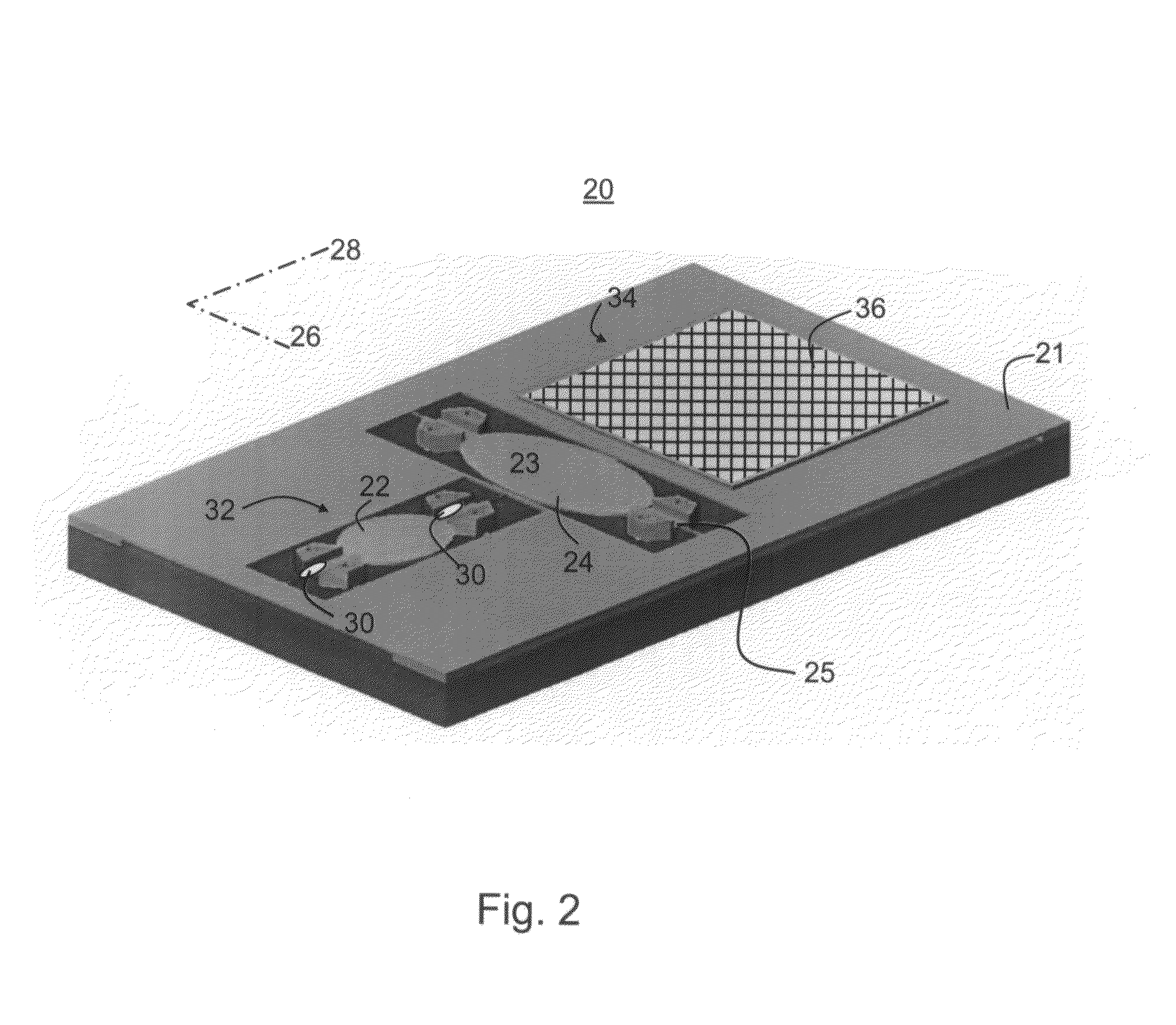Method and device for scanning light
a light scanning and light technology, applied in the field of light scanning, can solve the problems of large power consumption, system limitations, bulky crts, etc., and achieve the effect of high quality
- Summary
- Abstract
- Description
- Claims
- Application Information
AI Technical Summary
Benefits of technology
Problems solved by technology
Method used
Image
Examples
example
[0192]Reference is now made to the following example, which together with the above descriptions illustrates the invention in a non limiting fashion.
MEMS Manufacturing Process
[0193]As stated, the dimension of any component of device 20 is preferably in the sub-millimeter range, in which case device 20 preferably comprises a MEMS. Thus, according to a preferred embodiment of the present invention there is provided a method of manufacturing a MEMS. The method comprises the following method steps which are illustrated in the flowchart of FIG. 6. Block 82 represents a step in which a rotor assembly having a permanent magnet is manufactured, and Block 84 represents a step in which a stator assembly having an arrangement of coils is manufactured. Preferred manufacturing processes of the stator assembly and the rotor assembly are further detailed hereinunder. The manufacturing processes represented by Blocks 82 and 84 can be performed either sequentially or contemporaneously. In an additio...
PUM
| Property | Measurement | Unit |
|---|---|---|
| thicknesses | aaaaa | aaaaa |
| thicknesses | aaaaa | aaaaa |
| thicknesses | aaaaa | aaaaa |
Abstract
Description
Claims
Application Information
 Login to View More
Login to View More - R&D
- Intellectual Property
- Life Sciences
- Materials
- Tech Scout
- Unparalleled Data Quality
- Higher Quality Content
- 60% Fewer Hallucinations
Browse by: Latest US Patents, China's latest patents, Technical Efficacy Thesaurus, Application Domain, Technology Topic, Popular Technical Reports.
© 2025 PatSnap. All rights reserved.Legal|Privacy policy|Modern Slavery Act Transparency Statement|Sitemap|About US| Contact US: help@patsnap.com



